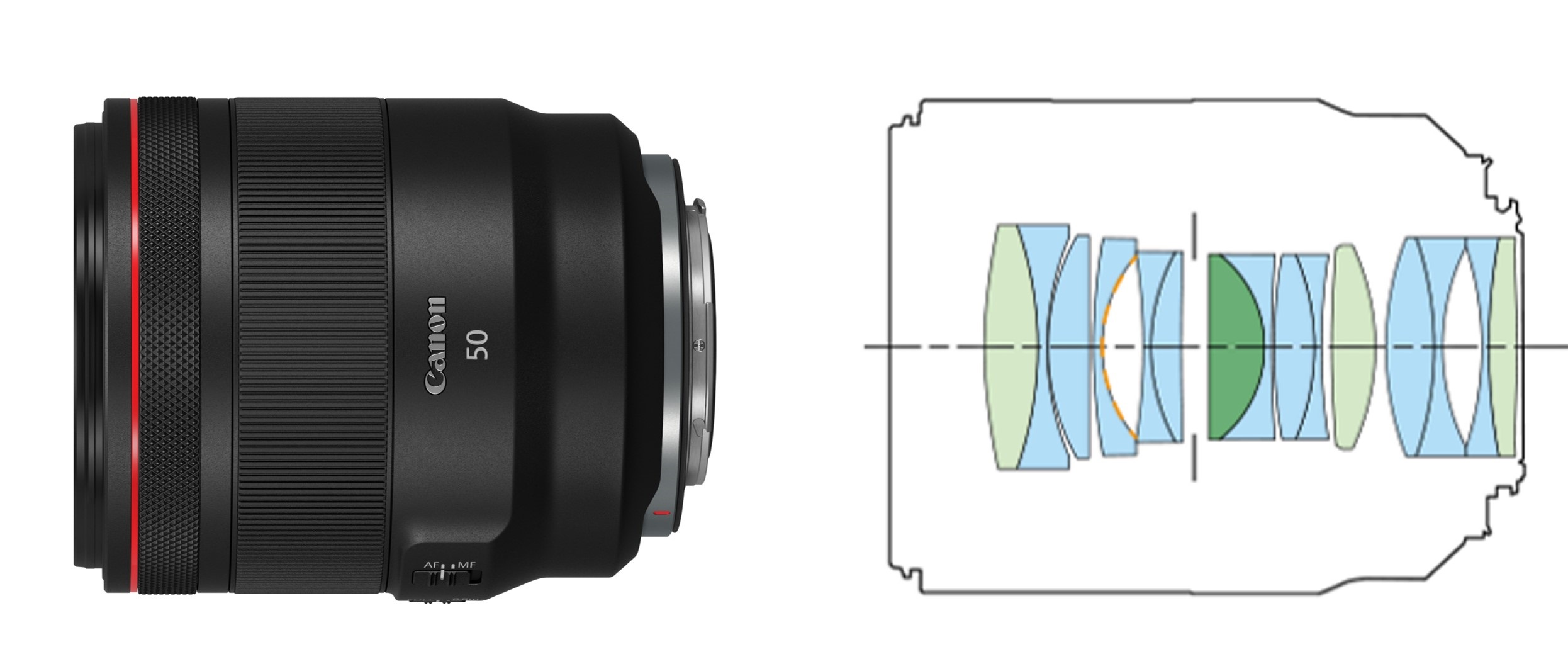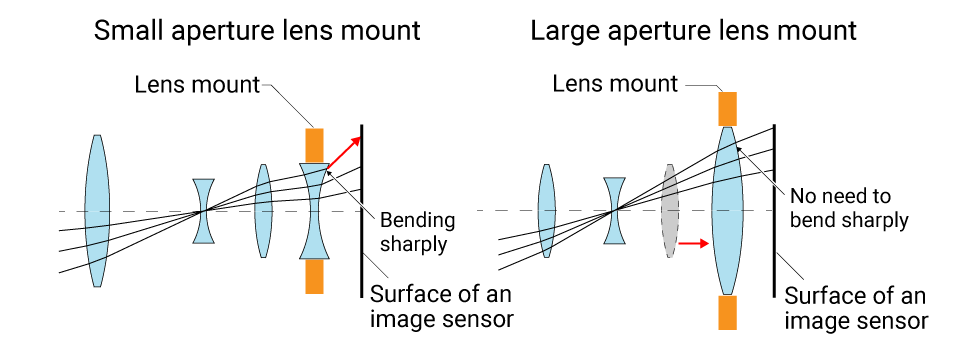You need a good camera to take beautiful pictures. And the lens matters just as much.
Only when the camera and lens are at their full potential can the scene before you be captured as a beautiful photograph.
Some people may think that the image quality of photos taken with a digital camera is good enough.
But photography never stops evolving.
Mirrorless cameras are becoming the dominant form of digital cameras. Do you know that their mirrorless construction helps to improve the image quality of lenses?
Light cannot bend without aberration
When we take a picture with a digital camera, the light passes through many lenses in the interchangeable lens to the image sensor.
The interchangeable lens bends the light to shrink the scene in front of you to a size that fits the image sensor.

When light is bent, a phenomenon called aberration, which appears as distortion or color bleeding, inevitably occurs. The more you suppress aberrations, the more accurately you can capture the shapes of things.
One type of intriguing photographic expression called “bokeh” can also be realized more beautifully and naturally by suppressing spherical aberration. Therefore, when designing interchangeable lenses, it is very important to suppress aberrations.


The mirrorless camera structure expands the possibilities of interchangeable lenses.
Bending light causes aberrations, so it is important not to bend light as much as possible to suppress aberrations. Even if bending is necessary, it's important to avoid sharp bending. In order to reduce the effects of aberrations, which appear mainly in the periphery of the photograph, it is desirable to control the light in the periphery by placing the lens as close as possible to the image sensor.
SLR cameras require some distance between the lens and the image sensor to place the mirror. Mirrorless cameras, on the other hand, don't have a mirror in front of the image sensor. Because of this, the distance between the lens and the image sensor (the back focus) of a mirrorless camera is very short, lending to the term "short back focus." This enables the placement of lenses in positions that were otherwise impossible, which has increased the degree of design freedom and has greatly expanded new possibilities for interchangeable lenses.

In a short-back-focus arrangement, light passing through the lens periphery can be easily controlled
as the lens is closer to the sensor (illustration on the right)

In a short-back-focus arrangement, light passing through the lens periphery can be easily controlled as the lens is closer to the sensor (illustration on the right)
Large aperture mount further improves image quality
Aberrations can be further suppressed by making the lens closest to the image sensor as large as possible. If the lens is large enough, the light doesn't have to be sharply bent just before it reaches the image sensor.
Canon's interchangeable lens mirrorless digital cameras feature a large aperture lens mount whose diameter is 54 mm. An interchangeable lens from the RF lens series is attached to an EOS R series camera through the mount. Both the short-back focus structure and the large-aperture lens mount work jointly to suppress various types of aberrations, resulting in clearer resolution and more natural bokeh.

A larger aperture mount allows light to travel straight to the sensor, reducing aberrations and achieving higher image quality.

A larger aperture mount allows light to travel straight to the sensor, reducing aberrations and achieving higher image quality.
Simulation secures quality
To achieve higher performance, RF lenses require higher quality. In conventional product development, a number of prototypes are created after a design is completed on a computer, and multiple experiments and verifications are conducted. However, Canon is pursuing product development using its proprietary “virtual prototyping technology,” in which the operation of products is confirmed through simulation. As a result, simulation reliably came to improve product quality by identifying all possible problems in advance, including those that could not be grasped by using actual prototypes, and by confirming that the performance was achieved correctly as designed.
Though the RF lens was designed using Canon's proprietary optical design tools that reflect decades of development experience, its design quality was also verified under various conditions in the state-of the-art simulation system. It is now possible to check the color, brightness, and ghosting*1 of a photo by an unrealized camera virtually even at its initial design stage, as if the camera really exists. Thanks to this simulation system, lenses that produce minimal ghosting and flares*2 were realized by choosing the best coating for each lens element.
- *1 A phenomenon that occurs when strong light enters the lens and reflects off it, creating a circular shape
- *2 Spots of light or unevenness that appears on the screen due to the reflection of strong light


In addition, the product is tested for comfort when held in consideration of the position and amount of force applied to the product, for drop impact, and for cooperative functions between the camera and the RF lens. The accumulated data is used to achieve quality with little variation.
Aiming for a beautiful lens close to the ideal
It is known from optical theory that an interchangeable lens has less aberration if its lens elements are arranged symmetrically. The combined effect of short back focus and large-aperture mount gives the RF lens a better balance of symmetry than the EF lens of the SLR era. In this way, Canon is creating a series of lenses that approach the beautiful ideal lenses every lens designer strives for.















